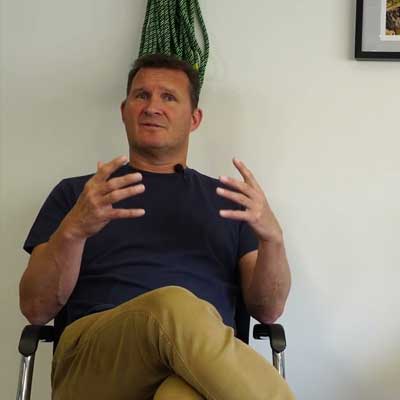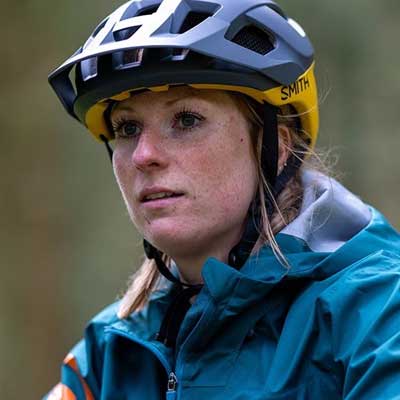
Top TipsWinter Mountaineering
Whether you're a mountaineering novice or a seasoned climber, we all want to be prepared when hiking in the winter. In 2019 (the last non-COVID year), Scottish Mountain Rescue reported 14 fatalities and 502 incidents, of which 48% were related to mountaineering. Although this is less than road deaths, mountain ranges can be extremely dangerous and callout frequency is trending upwards. Mountaineering Scotland campaigns to protect Scotland's mountains and educates those who want to use them - whether that be hillwalkers, mountaineers or skiers.
So whether you're a seasoned hillwalker or you're brand new to the mountains this winter, Mountaineering Scotland's ThinkWINTER Campaign is made for you. Here are some top tips for preparation and best practice to keep you and others safe.
Planning: Check The Weather
Always, always assess the forecast before you step onto the hill. And definitely don't sugar-coat it! Remember: cold and dry is better than cold and wet! Your clothing will stay cosy and you'll be less at risk from catching hypothermia.
WIND: Anything above 38mph is classed as a gale. If the wind is strong when you're low on the hill or in the trees, you know to expect harsh, howling conditions at the summit. As an example, at 35-40mph walking will become difficult... and between 50-75mph, even a fit mountaineer will be blown sideways.
AVALANCHES: Avalanche forecasts are really important. In 2013, 8 people triggered avalanches on Scottish hills and were killed. Any aspect of a mountain is susceptible to snow slides dependent on conditions, so consult the SAIS forecast before you go. Alarm bells should also be ringing if the temperature rises about freezing levels on the summit. Why? Melting snow equals sliding snow.
Your route choice should be influenced by the avalanche report, as it will show you which areas to avoid. Bear in mind that ridges (scoured terrain, like bridges to islands of safety on the hill) are safer areas to walk on. Have multiple backup plans to ensure you're not disappointed and remember: the mountain will always be there, so you can come back another day!
Using a handy traffic light system will help you reassess the weather as you go. This dynamic risk assessment tells you how switched on you needs to be on the mountain as conditions continually change.
GREEN: These are clear, safe conditions. You may not need to consult your map as regularly as you might in more challenging conditions.
AMBER: It's beginning to get threatening. There's poor visibility, you're donning extra layers and consulting your map, the ice axe is out and you're aware of avalanches.
RED: The daylight will be fading and/or navigation will be tough. You'll be using all the tools of the trade to get off the hill safely. This is 'switched on' mode.
To learn more, watch Mountaineering Scotland's 'Planning Your Journey' video below
Know Your Navigation
Here's a quick example. Two walkers were almost killed crossing from the south summit to the main Munro summit on Beinn a'Chaorainn near Fort William. Why? Cornices, which had formed over the eastern corries on the leeward side of the wind, had built out several metres from the hill's edge. Taking a direct compass bearing between the two summits clipped the edge of the mountain, and the walkers found themselves falling down the side of the hill.
Luckily they were self-rescued, but there's an important lesson to learn from this story. Add poor visibility and cornices together, and this means you really need to know your navigation. You can take a skills course if you're feeling a little rusty.
To learn more, watch Mountaineering Scotland's 'Refining Your Plans' video below
Dress Appropriately and Carry Spares
The weather in winter can change from wet and windy, to sub-zero temperatures and back to a calm and clear day again all in the space of a few hours. You need to be prepared to keep your body warm and dry from head to toe, and carry the right equipment to keep you moving forward.
What To Wear
- Warm/windproof trousers or leggings
- Fleece/insulating top layer
- Rigid-sole winter boots with appropriate socks
- Gaiters
- Warm hat
- Gloves/Mitts
- Consider thermal base layers close fitting against your skin. Merino wool will stay warm even when it gets wet
What To Carry
- Rucksack
- Waterproof Jacket (with hood)
- Waterproof over-trousers
- Spare insulating layer
- Spare gloves/mitts (at least two pairs)
- Spare hat
- Compass
- Map (waterproof or in a waterproof case)
- Watch
- Headtorch (and consider a spare)
- Emergency survival bag
- Whistle
- First Aid Kit
- Mobile phone and battery pack
- Sunglasses
- Goggles
- Walking poles
- Ice axe
- Crampons
- Food (including emergency high energy food) and drink
- Hot drink in a flask
To learn more, watch Mountaineering Scotland's 'Choosing Clothing & Equipment' video below
Prepare For Rescue, Just In Case
Hopefully you won't ever get in difficulty on the hill, but if you do there's a number of preparations you should have made beforehand.
1. Register your phone. Sending 'REGISTER' to 999 will give you the capability to text from your phone in low-signal areas. You'll be able to send your grid reference and your problem to the emergency services, but you can only use it if you've registered in advance. The system does not guarantee SMS delivery, so wait until you've received a reply to know that help is on its way.
2. Buy a personal beacon. They're not cheap, but if you're in trouble on the mountain this bit of kit can be exceptionally useful. Providing you've got a clear view of the sky, the trigger will transmit your location to the emergency services. At Tiso, we recommend the SPOT trackers (monthly fee).
3. Always tell somebody where you're going. It's easier to find lost people on a mountain when your friends of family know which route you were going to take.
4. Remember to ask for the Police and Mountain Rescue if you call 999 (or 112 in the EU).
To learn even more, watch Mountaineering Scotland's video 'Using Technology' video here:
Share your winter adventures with us using #mytisomicroadventure for a chance to be featured on our social media platforms!
@tisoonline



